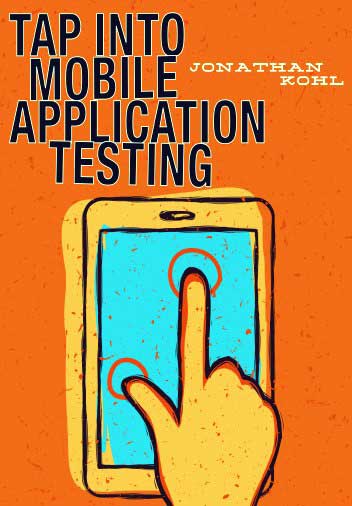As a major part of the software usage activity is gradually shifting to mobile devices, knowing how to test mobile applications is now a very valuable skill for software testers. The book “Tap Into Mobile Application Testing” written by Jonathan Kohl provides an extensive coverage of the mobile software testing domain written by an experience practitioner.

Starting with a presentation of the different aspects of mobile technology, this book covers all the important aspects of mobile testing on almost 500 pages. Jonathan Kohl shares his practical tester experience in an easy to read way. One of the most interesting part of the book is the presentation of the “I SLICED UP FUN!” thinking model for testing mobile applications. Each letter stands for an approach or consideration when testing mobile apps. I also liked very much the section about the importance of good bug reports.
I will recommend the book ” Tap Into Mobile Application Testing” to every software tester and developer involved with mobile apps. It is a book that gives an introduction to the domain for the novice and provides a reference knowledge source for the more experienced testing professional.
Reference: Tap Into Mobile Application Testing, Jonathan Kohl, 512 pages, http://leanpub.com/testmobileapps
Quotes
Now, add some user information to your evaluation. Mobile end users don’t have a lot of patience with apps. If something bothers them, they’ll just delete the app and move on. I call this a “deletable offense.” Watch for any emotion that makes you feel frustrated enough to want to delete the app, and note what occurred. This is a crucial aspect to the success of a mobile app and a useful tool to help us find all kinds of important bugs
If you have worked on professional software teams in the past, you are probably used to usability bugs getting the lowest priority. Technical teams get upset about problems like crashes, data deletions, or something else that is potentially destructive. Non-technical people tend to have the opposite view. They tolerate crashes and deletions (often blaming themselves), but they get very upset if an app is hard to use. In our quick fix society, we also don’t have much patience. If you are used to usability bugs getting ignored or deferred, it is time to flip them over in order of importance. You need to address the issues that are important to your users first, and then start working on other important issues like app crashes and corruption.
Whenever you test, your job is to use your limited time and resources to generate ideas, execute tests, observe and document what happens to the application you are testing, and provide that information to the people who need it. While that sounds simple, software can be used in many ways, in many environments, for different purposes by different people with different handsets. There is a potentially limitless universe of options to test out. It is up to you to find an optimal path, and that’s just what you’ll do.
Test plans have a long history on software teams – a lot of effort is put in to create them, but most of the time, no one reads them.

